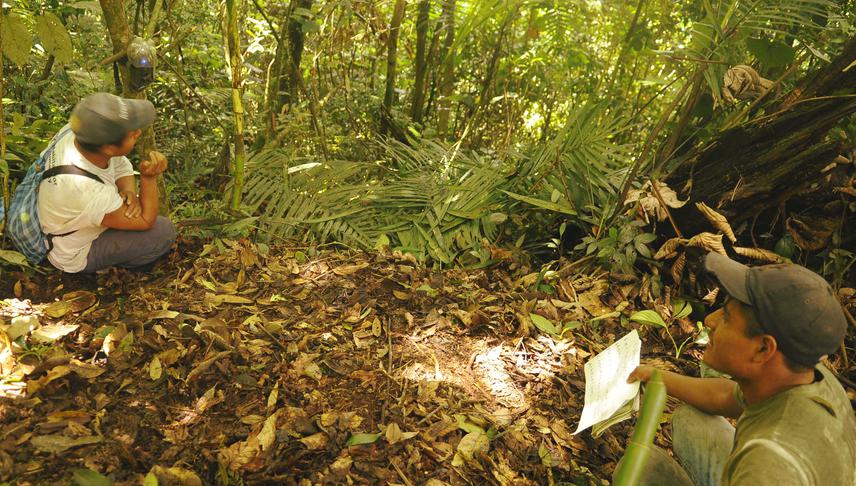Ronny Roma
To design and conduct a six month participatory monitoring program for three game species of ecological importance in tropical forests: lowland paca (Cuniculus paca), great curassow (Crax rubra) and Central American red brocket (Mazama temama) and To facilitate a participatory and adaptive decision-making process within the community to decide upon closed seasons and hunting quotas

Camera trap testing.
This project originated in 2011, when I began collaborating with the community of Nopalera del Rosario on different topics related to the sustainable use and management of its resources, territory and voluntary conserved areas. During this time, I participated in the creation of five community research teams to work in a series of activities related to monitoring of plants, animals, climate and nutrition, and participatory mapping. Based on this work, community researchers developed further research and management questions, in particular with regard to wild animals. They are keen to learn how to estimate local population sizes of the species the community consume as a source of protein.
The project designs and implements a participatory monitoring program for three game species of ecological importance in tropical forests: lowland paca (Cuniculus paca), great curassow (Crax rubra) and Central American red brocket (Mazama temama). This project will allow us to launch the monitoring program and implement it for a 6-month period. Furthermore, by training the community research teams, the project will allow us to ensure the continuation of the monitoring program through the mid-to long-term. Information on population size and animal behaviour is gathered and analysed, helping the community of Nopalera del Rosario to make evidence-based and scientifically-informed decisions regarding hunting control of species that community members depend on (Cuéllar et al 2004, Noss et al 2005). Based on this empirical data, a participatory and adaptive decision-making process is facilitated within the community to decide upon closed seasons and hunting quotas. It has been shown that participatory approaches to decision-making surrounding hunting sustainability can complement academic studies and promote conservation actions with positive results (Constantino et al 2008; Steinmetz et al 2006). Our approach complements local efforts to manage and conserve about 4,200 Ha of cloud and tropical forests that were formalized in 2004 with the certification of voluntary community-conserved areas. This new information and the associated community process will also strengthen local culture, which is dependent on hunting for sustenance, as well as the maintenance of local knowledge, practices and cosmovision (Ibarra et al 2011). Information produced also contribute to filling an important gap in the scientific data available, as to date there is no information on the status of wild animal populations in the region.